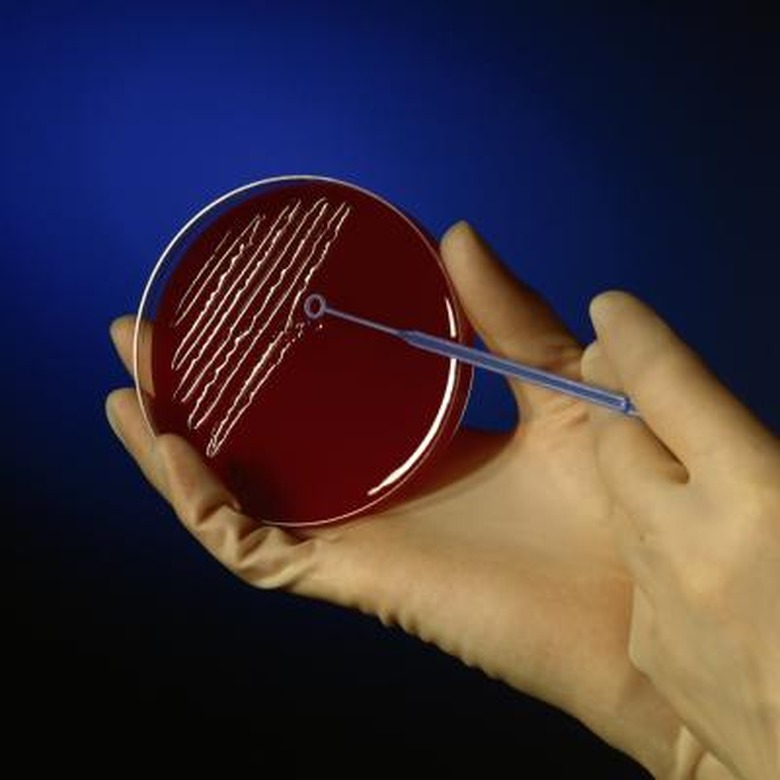Easy Microbiology Lab Projects
Microbiology may sound intimidating or difficult, but many microbiology projects are simple enough for even students in primary grades. Microbiology labs include topics that most young scientists find irresistible, such as molds and bacteria. The degree of difficulty for these microbiology lab projects can be adjusted for the age of the student.
Mold Garden
Mold Garden
To do this microbiology project you need plastic containers with lids and a variety of foods, such as breads, fruits and vegetables. You will not want to use meat, which contains a lot of protein — growing bacteria quickly and causing a foul smell. Put a slice of bread in one container, sprinkle with water and, after a half hour, cover. Put orange slices, bananas, lettuce leaves, apples or other fruits or vegetables in the other containers. As with the bread, sprinkle with water and cover after 30 minutes. Check the containers each day and note any growth of mold and note if there appear to be different types.
Starch Testing
Starch Testing
This easy microbiology project requires iodine, a glass jar, an eyedropper, water, a plastic plate and a variety of foods such as an uncooked potato, rice, cheese, meat and an apple. Mix the iodine solution with an equal amount of water in the glass jar. Place samples of each of the foods on the plastic plate. One at a time, put a few drops of the iodine solution on each of the foods with the eyedropper. If the food contains starch the food will turn bluish black or dark brown. Record your findings and determine what the starch-containing foods have in common.
Toothbrush Bacteria
Toothbrush Bacteria
For this experiment you need sterile water, petri dishes, sterile swabs and an electric toothbrush. You also need the nutrient agar. Place agar in the petri dishes. Wet the swab with sterile water and swab the inner side of your molars on the left side of your mouth. Wipe the swab in one of the petri dishes. Then brush your teeth for one minute using regular toothpaste. Then rinse your mouth and swab the same area in the same manner and wipe that swab in another petri dish. Then brush your teeth once more for a minute and swab the same molar area again. Put this swab sample in another petri dish. Observe which samples contain the most and least bacteria. Test the hypothesis that brushing teeth for two minutes removes more bacteria than brushing for only one minute.
Bread Mold
Bread Mold
For this experiment you will see which grows more mold — more or less moisture, and lighter or darker conditions. Have several slices of bread, a glass of water, an eyedropper and enough plastic bags for each sample. Have three different amounts of water dropped onto six pieces of bread. For instance, place three drops of water on two slices, two drops on two more slices and one drop each on two more slices. Place in a sandwich bag and close. Then place one of each moisture group, properly labeled, in a dark, warm place and then the other sample in a well lit warm area. Compare the samples over the course of a week to determine which conditions contributed to the greatest growth of mold.
Cite This Article
MLA
Joy, Katlyn. "Easy Microbiology Lab Projects" sciencing.com, https://www.sciencing.com/easy-microbiology-lab-projects-8433712/. 24 April 2017.
APA
Joy, Katlyn. (2017, April 24). Easy Microbiology Lab Projects. sciencing.com. Retrieved from https://www.sciencing.com/easy-microbiology-lab-projects-8433712/
Chicago
Joy, Katlyn. Easy Microbiology Lab Projects last modified August 30, 2022. https://www.sciencing.com/easy-microbiology-lab-projects-8433712/
